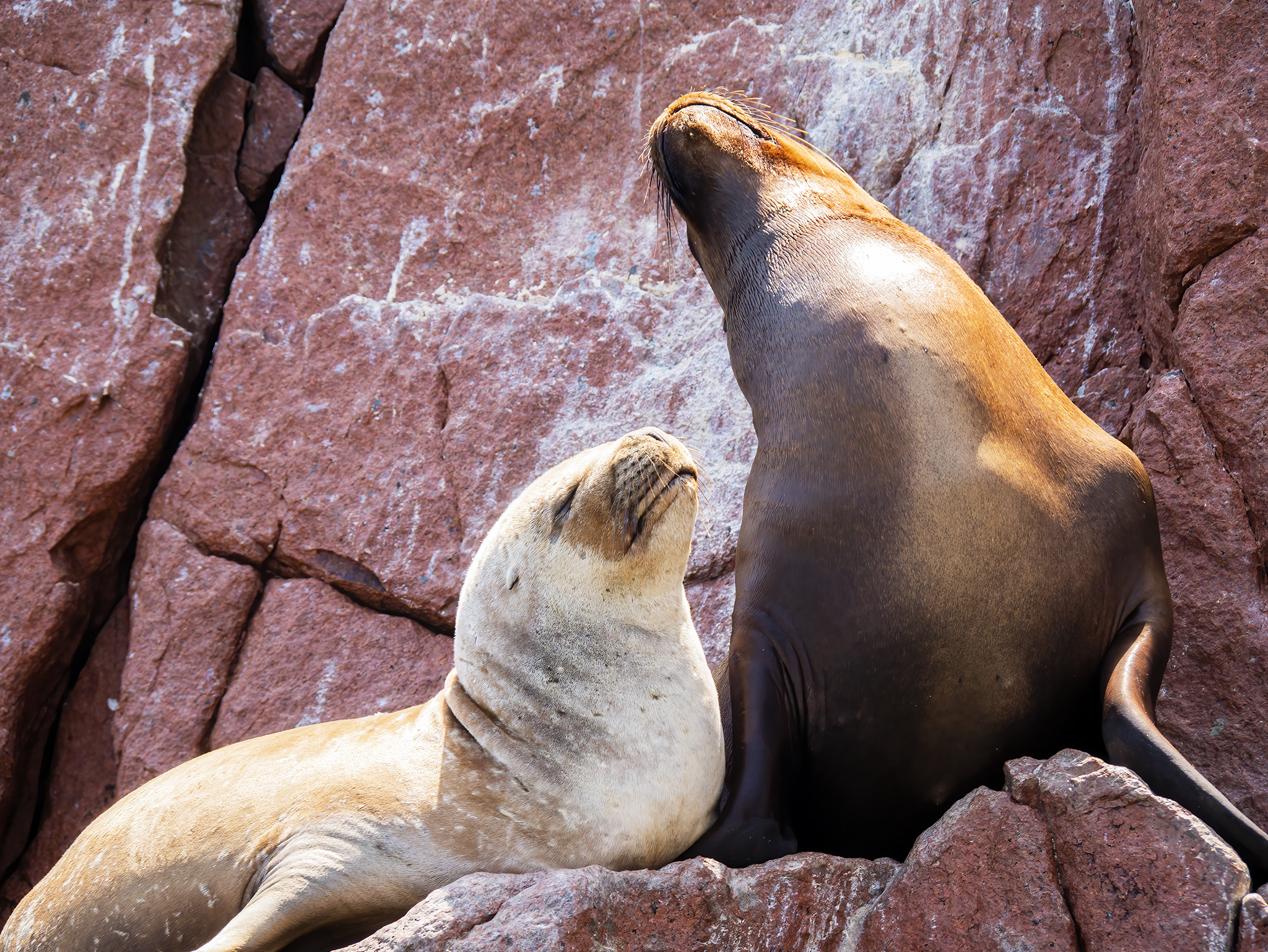Check out these beautiful South American Sea Lions soaking up some sun on the rocks of the Islas Ballestas.
South American Sea Lions are found right around the southern coast of South America, from Peru all the way to the Brazilian border – but identifying them can sometimes be a bit tricky.

Have you ever been swimming and seen a sea lion, and you’re like, “wow, a seal”, and then a true seal goes, “that’s a not a seal, it’s a sea lion”, and then the sea lion says, “I’m technically still a seal”, and the true seal goes, “no you’re not”, and then a walrus comes along and is like, “where’d you guys learn to speak English?”
Yeah, it’s confusing, so here’s a quick breakdown so you don’t embarrass yourself next time you’re with a pinniped.
I guess I should start with what a pinniped is…
Seals, sea lions and walruses are collectively referred to as pinnipeds. Pinnipeds are then split into three groups – walruses, eared seals (including sea lions and fur seals), and earless seals (also referred to as ‘true seals’). Walruses are pretty easy to identify. If you’re anywhere near the North Pole and you see a giant, uncoordinated ball of blubber with two large tusks – that’s a walrus. The other two groups are a bit trickier. Sea lions and fur seals both have little ear flaps and the ability to walk around on their flippers. In contrast, you have to get really close to see a true seal’s ear, and if they need to move on land, they kinda just flop about clumsily until they arrive at their destination.
So there you go, just don’t ask me what the difference is between a sea lion and a fur seal…

The male South American Sea Lion in the photo above demonstrates exactly why they’re called sea LIONS. Look at that majestic mane. It almost distracts you from the dozen or so ADORABLE BABY SEA LIONS that he’s keeping an eye on.
South American Sea Lions like to breed on beaches made of sand or pebbles. In the lead-up to breeding season, the males rock up first in order to lay claim to a territory and defend it against rivals. Mating typically occurs during December and January, and males attempt to create a harem by herding females into their territory. There’s usually three or four females in a harem, but some males have been recorded with up to eighteen!
The gestation period for sea lions is just under a year, and the mother will mate again within a week of giving birth. I was at the Islas Ballestas in March, meaning that the baby sea lions were around 2-3 months old, and the females were about the same amount of time into their new pregnancies. The photo above is a perfect example of a South American Sea Lion harem, consisting of a male, a few females, and all of their offspring!
Sea lion babies are called pups, and they’ll remain with their mother for up to a week before she begins making hunting trips to provide for her young. Since sea lions give birth simultaneously with so many other sea lions, the pups are afforded safety in numbers while their mother is away.
After about four weeks, sea lion pups begin entering the water for the first time with their mothers. In this video, we see a mother South American Sea Lion showing her pup the ropes when it comes to navigating the open seas.
The pup is weaned from its mother after a year, just as she prepares to give birth, and begin the whole cycle again!
–
South American Sea Lions (Otaria flavescens), Islas Ballestas, Peru


